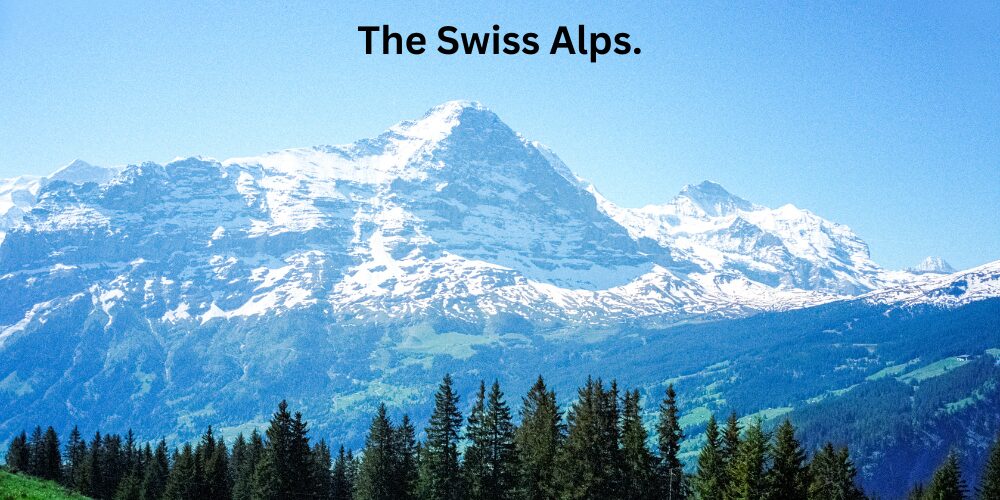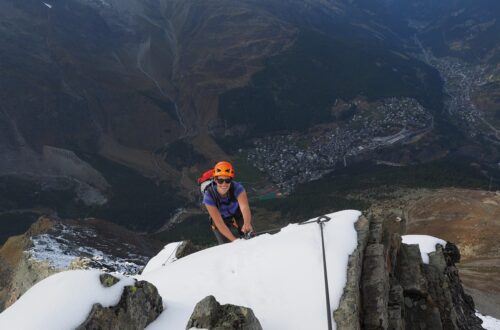Via Ferrata Rigidalstock: Your Gateway to Alpine adventure.
Tucked in the heart of the Swiss Alps near the resort town of Engelberg, the Via Ferrata Rigidalstock offers a thrilling yet accessible alpine climbing experience. It is Set against a breathtaking backdrop of jagged peaks, alpine meadows, and glacier-fed valleys. This via ferrata route is a favorite among Swiss locals and international adventurers alike. It combines moderate physical challenge with extraordinary scenery, making it one of the best intermediate-level via ferratas in central Switzerland.

Location and Overview
Via Ferrata Rigidalstock is located in the canton of Obwalden, just above Engelberg, a mountain village known for its skiing, hiking, and monastery heritage. The route climbs the Rigidalstock, a rugged peak that rises to 2,593 meters (8,507 ft) and offers sweeping views over the Engelberg valley and the surrounding alpine range. It’s part of the Walenstöcke group, an imposing line of cliffs and peaks that create a dramatic skyline north of the Titlis massif.
There are actually two routes to the summit:
- Via Ferrata Brunnistöckli, a short and beginner-friendly climb.
- Via Ferrata Rigidalstockgrat, the main and more challenging route that continues from Brunnistöckli and climbs to the summit of Rigidalstock.
Click here for a great selection of adventures in Europe.
This combination gives climbers the flexibility to tailor their day according to their experience level and weather conditions.
Access and Approach
The route starts near the Brunni cable car station, which can be reached by gondola and chairlift from Engelberg. The approach from the Brunnihütte (1,860 m) takes around 30 to 45 minutes of hiking to reach the base of the Brunnistöckli ferrata. Most climbers start with this easier route as a warm-up before tackling the steeper Rigidalstockgrat.
Both routes are well-maintained and equipped with modern steel cables, stemples, and ladders, ensuring a high level of safety. However, like all alpine via ferratas, this climb demands proper gear and preparation: helmet, harness, via ferrata set, gloves, and sturdy hiking boots are essential.
Click here to read about another stunning Via Ferrata in Switzerland.
Route Description: Brunnistöckli and Rigidalstockgrat
The first section, Via Ferrata Brunnistöckli, is perfect for beginners or those with limited time. It’s short—only about 150 meters of climbing—but offers exciting features like vertical walls, metal rungs, and cable traverses. The exposure is minimal, and there are plenty of rest spots. Children and cautious first-timers often use this route as their introduction to the world of via ferratas.
Continuing from the top of Brunnistöckli, more experienced climbers can follow the trail toward the Rigidalstockgrat, the main attraction. This via ferrata climbs a steep rocky ridge to the summit of Rigidalstock and is rated K3-K4 (moderate to difficult) on the Hüsler scale. The route involves steep, vertical passages, narrow ridgelines, and a few exposed sections that test your nerve and climbing technique.
One of the most memorable segments is the long, airy traverse across the exposed east face of the mountain. While protected by a steel cable, this section gives a thrilling sense of alpine exposure, with views plunging thousands of feet below to the Engelberg basin. The climb culminates in a short scramble to the summit cross. The reward is a jaw-dropping 360-degree panorama of the surrounding peaks—Titlis, Spannort, Hahnen, and even the distant Bernese Alps on a clear day.
Difficulty and Experience Level
The Rigidalstock via ferrata is rated moderate to difficult, but it remains accessible to athletic hikers with a good head for heights and basic via ferrata experience. While there are no overhanging sections, the sustained vertical climbs and exposure make it unsuitable for complete beginners. Those with prior experience on easier routes—like Pinut or Mürren-Gimmelwald—will find it an ideal step up.
The route is especially appealing for those looking to transition from entry-level via ferratas to more alpine-style ascents without committing to extreme technical challenges.

Safety and Season
The Rigidalstock via ferrata is generally accessible from late June to early October, depending on snow conditions. Since the route ascends to nearly 2,600 meters, it’s essential to check weather forecasts and trail conditions before climbing. Snow or ice can linger into early summer, making the cables slippery and increasing the risk of falls.
Though the route is well-secured, it’s exposed to weather changes. Afternoon thunderstorms are common in the Alps, so an early start is strongly recommended. Helmets are a must, as the rock can be loose in sections and the risk of falling debris—especially from above—is present.
Click here for an incredible European adventure spanning four countries.
Descent and Return
The descent follows a marked hiking path that loops back to the Brunnihütte, descending through alpine pastures and rocky switchbacks. The descent takes about 1.5 hours and offers another chance to soak in the surrounding beauty. For those staying overnight, the Brunnihütte SAC hut offers meals and accommodation with unbeatable mountain views.
Alternatively, the nearby Härzlisee lake is a perfect place to rest tired legs and enjoy a picnic or dip after a long day on the rock.
If you want to lose weight before attempting to climb Via Ferratas, click here.
Why Climb Rigidalstock?
Climbers are drawn to Rigidalstock not just for the adrenaline, but for the harmony of nature, challenge, and accessibility. Unlike more extreme alpine routes, Rigidalstock is friendly to fit hikers and amateur alpinists while still delivering the thrill of vertical movement and exposure.
The combination of routes—Brunnistöckli and Rigidalstockgrat—also makes it ideal for mixed-level groups, with something to offer for climbers of varying ability. Families, solo adventurers, and guided groups all frequent this area during the summer months, making it a lively and welcoming destination.
For those seeking more, Engelberg is also home to the Fürenwand via ferrata, a longer and more technical K4-K5 route with 700 meters of vertical gain—perfect for a follow-up challenge once you’ve conquered Rigidalstock.
Click here for selection of stylish, practical and outdoors appropriate menswear.
Final Thoughts
The Via Ferrata Rigidalstock is a shining example of what makes climbing in Switzerland so special. It is safe yet exhilarating routes, stunning alpine scenery, and excellent infrastructure. Whether you’re a seasoned climber or a hiking enthusiast looking to try something new, this route is an ideal introduction to the more vertical side of the Alps. With its proximity to Engelberg, well-marked trails, and awe-inspiring views, it promises a day—or weekend—of unforgettable mountain adventure.

